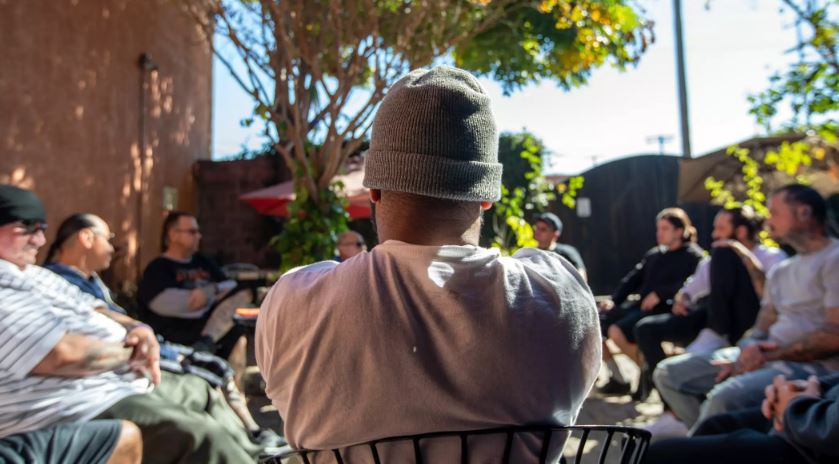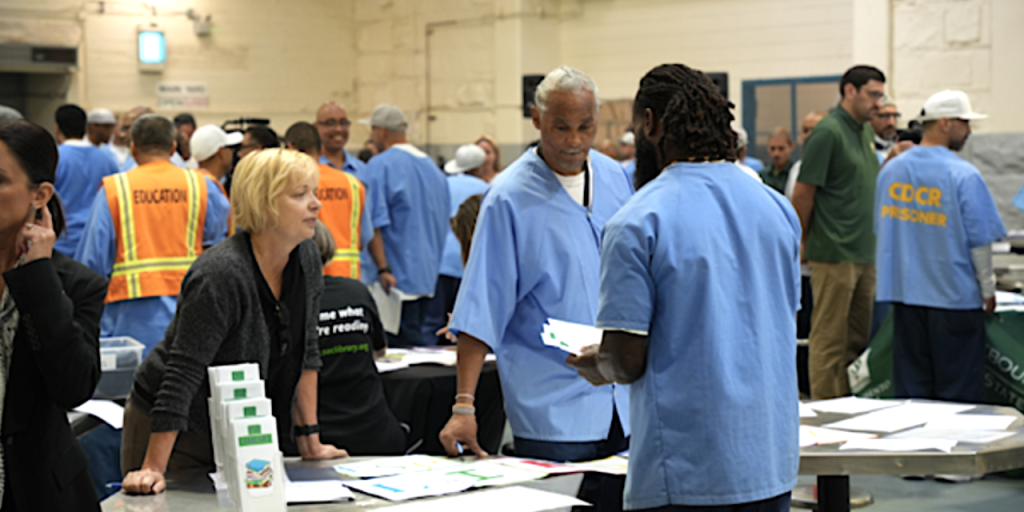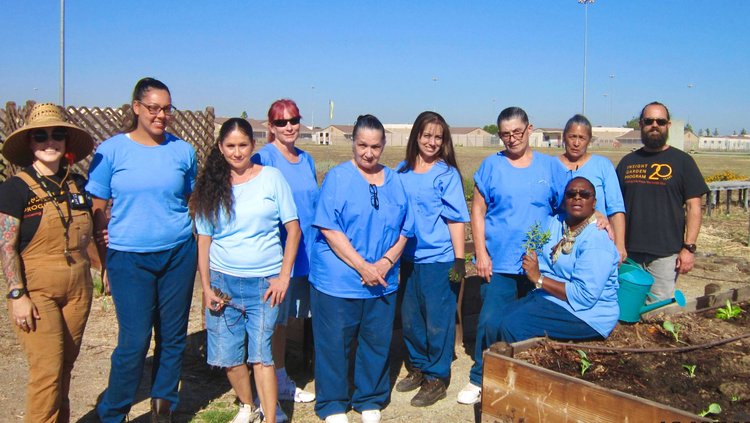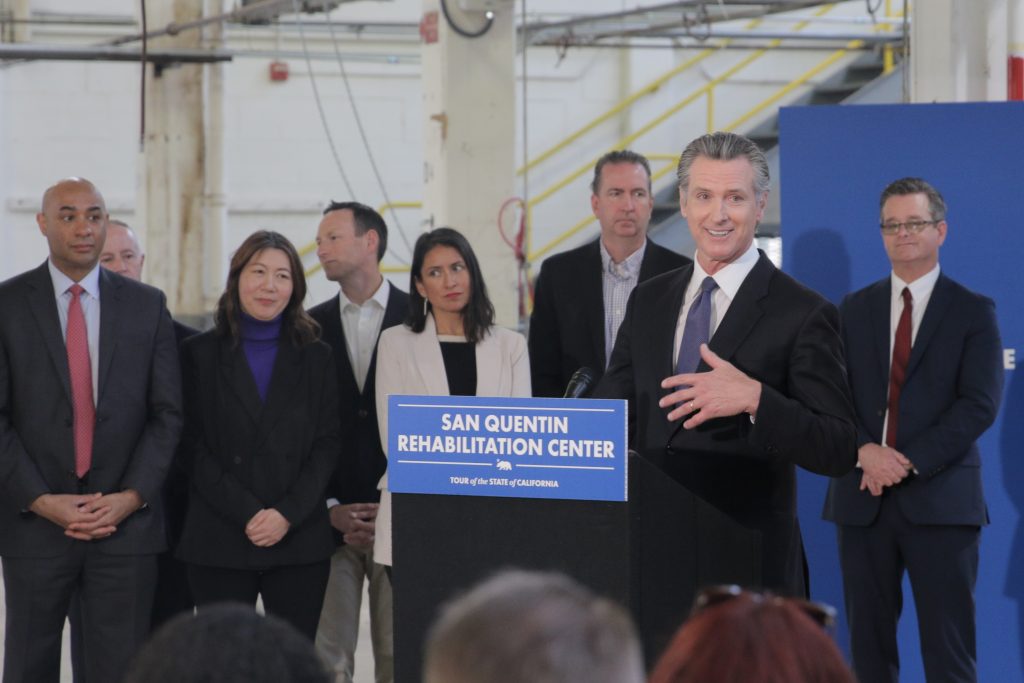The California Model
CDCR has embarked on a once-in-a-generation transformation
Working with multidisciplinary experts, and building on international best practices and principles, the California Department of Corrections and Rehabilitation (CDCR) is implementing the “California Model.” The goal? Building safer communities through rehabilitation, education, restorative justice and reentry.
The California Model is built on four foundational pillars:
Dynamic Security is an approach that promotes positive relationships between staff and incarcerated people. This is accomplished through purposeful activities and professional, positive, and respectful communication.
Peer Mentorship seeks to train incarcerated individuals to use their lived experiences to mentor and support their peers.
Normalization aims to bring life in prison as close as possible to life outside of prison. The more life in prison resembles life in the community, the easier it will be for people to transition and adjust to life in the community upon release.
Becoming a Trauma-Informed Organization: CDCR and CCHCS are committed to improving the practices, policies, and culture of the entire department by educating staff at all levels to recognize the impacts of trauma and ensure the physical and emotional safety of all staff and incarcerated individuals.
Video Spotlight: Embracing the California Model at CCWF
Central California Women’s Facility is committed to the California Model, showcasing a commitment to rehabilitation, positive experiences, and transformative change throughout the prison. The collaborative efforts of staff and incarcerated people reflect a profound dedication to public safety and successful reentry, capturing the essence of the California Model. Learn more at Inside CDCR.
In the Media





Share your thoughts!
We want to hear from you! Send us an email with your questions or comments.
Email the California Model team

San Quentin transformation
In March 2023, Governor Newsom announced the future transformation of San Quentin State Prison into San Quentin Rehabilitation Center.

What is the California Model and how is it changing lives?
The California Model draws on international best practices to change culture within CDCR and CCHCS. The Department is committed to improving working and living conditions for all who live in, work in, and visit state prisons.
The California Model is in line with CDCR’s mission to enhance public safety and promote the successful reintegration of the people in our care back to their communities.
CDCR has partnered with the Amend program at the University of California, San Francisco, and has sent people in leadership positions to Norway to learn how their approach to normalcy in corrections and rehabilitation is lowering recidivism and expanding employee wellness.
While Norway and California are very different, the core of their model is the same as ours. When we treat one another with respect, our environment will change for the better.
Frequently Asked Questions
The California Model is a paradigm shift that draws on international best practices to change culture within the state’s prisons. The California Model aims to develop a human-centered culture of healing, positive staff-inmate communication, and improved living and working conditions. In cohesion, these principles will improve public safety, rehabilitation and reentry, as well as outcomes.
There is only one California Model, founded on the principles of dynamic security, normalization, and trauma-informed care.
Recently, Governor Newsom announced a plan to transform the criminal justice system in California. The plan includes a complete overhaul of San Quentin State Prison, which will be renamed San Quentin Rehabilitation Center (SQRC). It will be focused on preparing individuals for successful returns to the community.
Systemwide, this culture shift will leverage international best practices and processes, including those being developed at San Quentin, to address longstanding challenges related to incarceration and correctional working conditions.
The innovation in development at San Quentin provides a unique opportunity to reimagine how CDCR/CCHCS staff can collaborate with stakeholders throughout California to ensure we are providing the best services to the population while they are incarcerated and to prepare them for their return home. The transformation of SQ will run concurrently with the overarching design of the California Model.
Because it is the right thing to do. CDCR/CCHCS is a vast, complex system with dedicated correctional professionals who have the opportunity to help people change their lives. We are re-emphasizing that the loss of liberty is the punishment by the courts. Our primary duty is to provide an environment conducive to rehabilitation so incarcerated people can become better neighbors, both in prison and when they return to our communities.
This cannot be done without ensuring the well-being of our tens of thousands of hardworking employees. By fostering peaceful prisons founded on respect and shared values, we aim to reduce incidents of violence and improve the overall well-being of our employees. Our staff significantly impacts the lives of all the people who live in correctional systems. There are more than 96,000 incarcerated people in their care, and our employees must maintain safety and security while also facilitating their care and rehabilitation. The Division of Adult Parole Operations (DAPO) does the same for more than 43,000 people under parole supervision in our communities.
The California Model builds upon work already underway to facilitate the successful reintegration of individuals into their communities. CDCR/CCHCS will continue to collaborate with subject matter experts to identify best practices and build upon rehabilitative successes, including:
- Enhancing staff training to include implicit bias as well as developing training for 2024 based on California Model principles
- Implementing face-to-face college at all prisons
- Providing secure laptops to all incarcerated college students to use in their studies
- Rolling out tablets statewide to enhance connections with loved ones as well as provide positive downtime activities such as books and music.
- Adding a third day of in-person visits at all institutions
- Implementing programs and events designed to include people of all ages and physical abilities
- Encouraging institution beautification efforts, including drought-tolerant gardens, landscaping, and murals.
- Improving furniture and bedding choices to provide more comfortable and attractive options
- Expanding reentry services statewide.
CDCR/CCHCS has incorporated California Model principles at various test sites, including Valley State Prison (VSP), Salinas Valley State Prison (SVSP), and Central California Women’s Facility (CCWF) to identify scalable possibilities for all CDCR prisons.
- VSP: Custody staff working in the Youth Offender Rehabilitative Community have received intensive training in dynamic security and the importance of creating a more normalized living environment. Additionally, custody and health care staff are working with incarcerated people and community leaders to develop an in-prison reentry facility in which community organizations provide services to people in the last one to two years of their sentence to prepare them for release. Through the Youthful Offender Program (YOP), incarcerated people participate in intensive trauma-informed programs that address the root causes of criminal behavior as well as victim impact and family relationships.
- SVSP: Custody staff have tailored the “Resource Team” approach, developed in Norway, to their work in an SVSP unit with the highest-risk, highest-needs individuals who have co-occurring serious psychiatric needs and who engage in profound violence. After implementing the Resource Team approach in the Psychiatric Inpatient Program (PIP), staff have seen a decrease in violence and assaults on staff and improved their occupational health and professional pride. Feedback from both staff and patients in the unit is very positive.
- CCWF: Custody staff are using the principle of dynamic security to develop a more professional rapport with the population in order to better understand their needs, prevent and reduce grievances, and improve engagement in programming. The goal is for CCWF to ultimately develop an integrated approach across the prison that greatly improves the interactions between staff and incarcerated people and helps clients leave prison with more tools to lead a successful life in the community than they had when they arrived in prison.
The Department is a vast complex system with staff who have the capacity to help people change their lives. We are reorienting the approach of our staff to understand that the loss of liberty is the punishment our population has been given by the courts. Our primary focus is to provide an environment conducive for rehabilitation so that our population can become better neighbors – both in prison and when they return to our communities.
Our staff significantly impact the lives of all the people who live in a correctional system. Staff do their job logistically where over 96,000 incarcerated people must live, work, and rehabilitate themselves to reenter society while protecting public safety. Our parole division does the same for over 43,000 parolees currently in our communities.
The California Model uses principles that have proven successful in other countries and states. These include:
- Dynamic Security promotes positive relationships between staff and incarcerated people through purposeful activities and professional, positive, and respectful communication.
- Normalization aims to bring life in prison as close as possible to life outside of prison. The more life in prison resembles life in the community, the easier it will be for people to transition and adjust to life in the community upon release.
- Peer Mentorship: seeks to train incarcerated individuals to use their lived experiences to mentor and support their peers. CDCR will build upon the existing Offender Mentor Certification Program and Youth Offender Rehabilitative Communities to provide more opportunities for incarcerated people to mentor and receive mentorship.
- Becoming a Trauma-Informed Organization: CDCR and CCHCS make a commitment to improve the practices, policies, and culture of the entire department by educating staff at all levels to recognize the impacts of trauma and trauma-informed organization for the physical and emotional safety of all staff and incarcerated individuals.
CDCR/CCHCS will scale these evidence-based principles to guide expectations for how staff and incarcerated people interact to create a healthier work environment. These principles have been shown in other states and nations to improve short-term health and well-being among incarcerated people and correctional staff and to reduce recidivism.
There are three goals for the California Model:
- Wellness of Staff and the Population We Serve: Improving the working environment of California prisons through staff training and facility enhancements in order to improve the health and well-being outcomes of people who live and work in state prisons, with a focus on reducing trauma and toxic stress,
- Public Safety: Returning people as better neighbors and family members, set up to thrive, thereby reducing recidivism and increasing public safety, and
- Trauma-Informed Organization: Reducing incidents of use of force, staff assaults, overdoses, self-harm, homicides, suicides, grievances, self-isolation, mental health crisis bed admissions, and other identified outcomes
Yes. CDCR/CCHCS will measure success in a variety of operational and administrative areas, including:
- Pillar One: Employee Equity, Development, and Support
- Increase employee 5- to 10-year retention rate
- Improve employee job satisfaction, based on an annual survey.
- Reduce employee vacancy rates.
- Reduce workers’ compensation claims.
- Pillar Two: Whole Person Care, Programming, and Post-Release Success
- Increase rehabilitative program participation and completion rates.
- Reduce recidivism, reconviction, and re-arrest rates.
- increase the post-release employment rate
- increase the post-release housing rate
- Increase the number of formerly incarcerated people with access to health care.